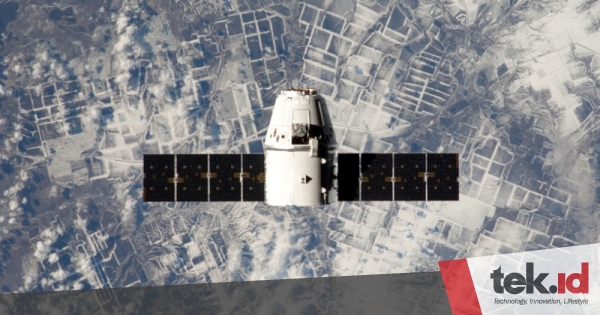Astronomers recently observed a planet that is likely completely covered by an ocean of water. This observation was made by NASA’s James Webb Space Telescope (JWST) and revealed the presence of water vapor as well as chemical signs of methane and carbon dioxide in the exoplanet’s atmosphere.
According to The Guardian (8/3), this exoplanet has a diameter twice that of Earth and is located approximately 70 light-years away from us. The chemical mixture is consistent with a water world where the ocean would cover the entire surface and have a hydrogen-rich atmosphere, according to researchers from the University of Cambridge.
“This ocean could reach temperatures of over 100 degrees Celsius,” said Professor Nikku Madhusudhan, who led the analysis. At high atmospheric pressure, this ocean could remain in liquid form, “but it is not clear whether it could be inhabited,” he added.
Although this interpretation is favored in a paper published in the journal Astronomy and Astrophysics Letters, it is debated by a team from Canada that conducted additional observations of the exoplanet known as TOI-270 d. They detected the same atmospheric chemicals but argued that the planet is too hot for liquid water – possibly reaching 4,000 degrees Celsius – and would have a rocky surface covered by a very dense atmosphere containing hydrogen and water vapor.
Regardless of this dispute, these latest observations showcase the remarkable insights from James Webb into the nature of planets beyond our solar system. This telescope captures starlight filtered through the planet’s rotating atmosphere to provide a detailed breakdown of the chemical elements present. From here, astronomers can build a picture of the conditions on the planet’s surface and the possibility of life surviving there.
Evidence for an ocean on TOI-270 d is based on the absence of ammonia, which should naturally be present in a hydrogen-rich atmosphere. However, ammonia dissolves in water so it would deplete in the atmosphere if there were an ocean underneath. “One interpretation is that this is a ‘hycean’ world – with a water ocean beneath a hydrogen-rich atmosphere,” said Madhusudhan.
The conditions on TOI-270 d would be very different from Earth. This planet is tidally locked, meaning one side always faces its star, and the other side is immersed in eternal darkness, creating extreme temperature contrasts.
“The ocean would be very hot on the daytime side. The nighttime side might be habitable conditions,” said Madhusudhan. However, its atmosphere would be very thick, with tens to hundreds of times the pressure at Earth’s surface, and water vapor swirling above the ocean. The waters would likely reach depths of tens to hundreds of kilometers, with a high-pressure ice bottom, and below that, a rocky core.
Professor Björn Benneke from the University of Montreal, who conducted additional observations of this planet, questioned the ‘hycean world’ hypothesis. “Its temperature, in our view, is too warm for water to be in liquid form,” he said, adding that the atmosphere appears to contain a substantial amount of water vapor – too much for the existence of an ocean.
Both teams detected carbon disulfide, which is associated with biological processes on Earth but can also be produced by other sources. However, there are no signs of other biosignature molecules, such as dimethyl sulfide (DMS).
“We cannot link [carbon disulfide] to biological activity,” said Madhusudhan. “In a hydrogen-rich atmosphere, it is relatively easy to make. But if we can measure this unique molecule, it promises that we will be able to measure habitable planets in the future.
“We need to be very careful in conveying findings about objects like this,” he added. “It is easy for the public to assume that we have found life.” Dr. Jo Barstow, an astronomer at the Open University not involved in the recent research, said, “The spectrum of this small planet with JWST is very interesting because this is a completely new environment that does not exist in our solar system.”
Barstow added that further observations to determine the abundance of water vapor in the atmosphere will help explain the possibility of an ocean. “This is really exciting, and it is great that two teams have looked at the same dataset and arrived at the same chemical composition,” he added.
Source link: [here](https://www.tek.id/gadget/astronomers-temukan-lautan-mendidih-di-angkasa-b2k3u9rGt)
